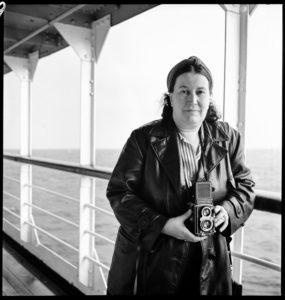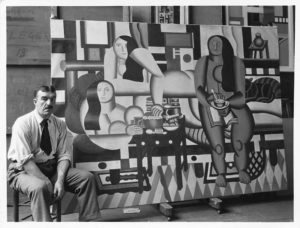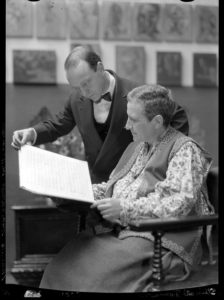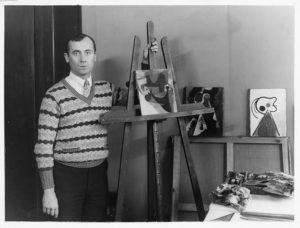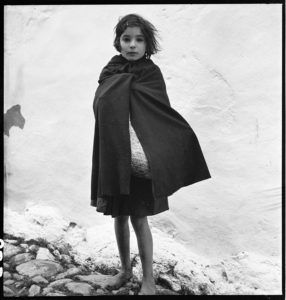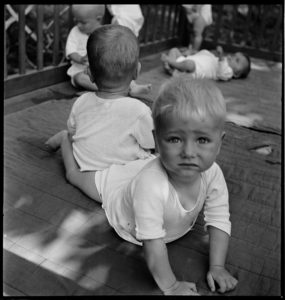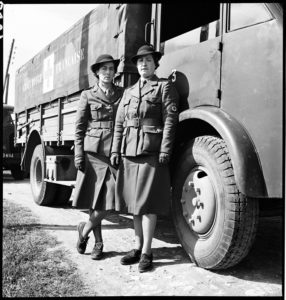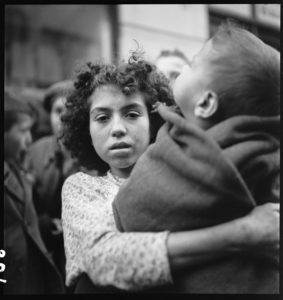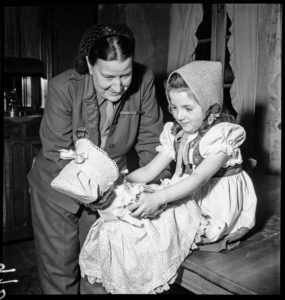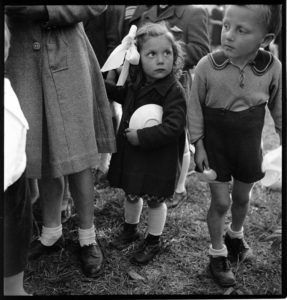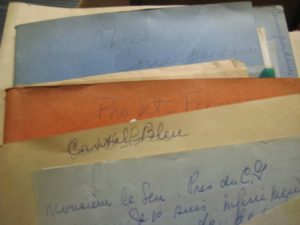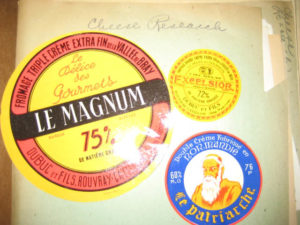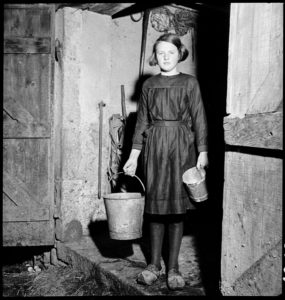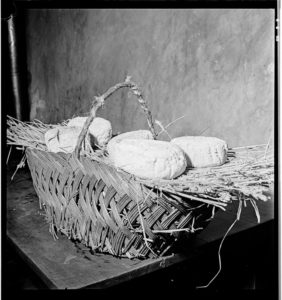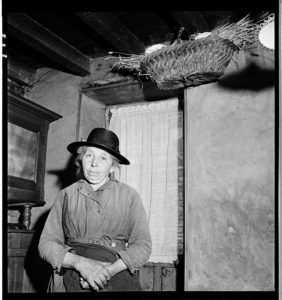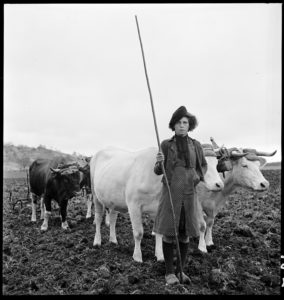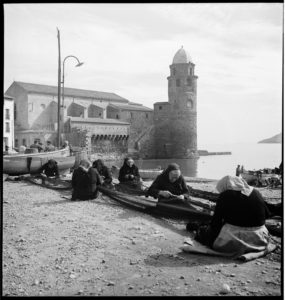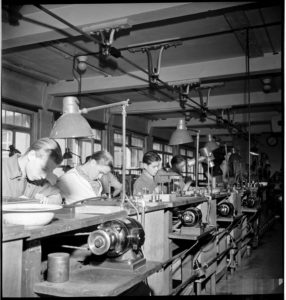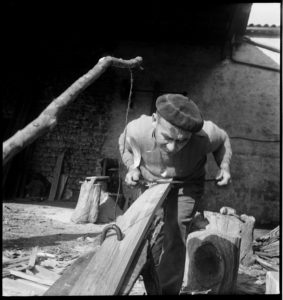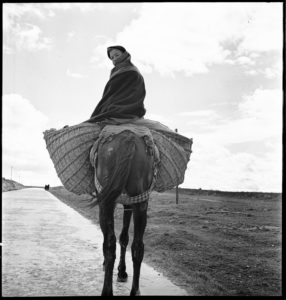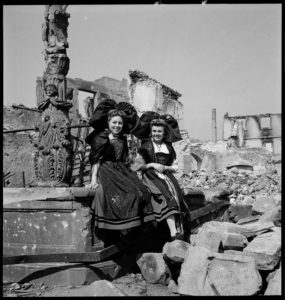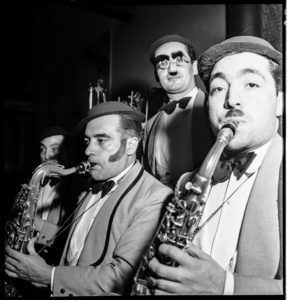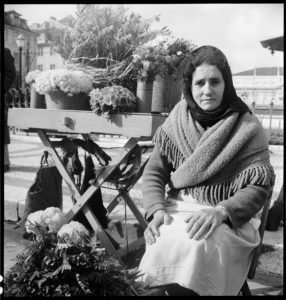Tag: online archives
Thérèse Bonney: Art Collector, Photojournalist, Francophile, Cheese Lover
Thérèse Bonney aboard the S.S. Siboney, en route to Portugal, 1941. BANC PIC 1982.111 series 3, NNEG box 49, item 19
Pioneering war correspondent and Cal grad Mabel Thérèse Bonney (1894-1978) was decorated with the Croix de Guerre and the Legion d’Honneur by the French government, and the Order of the White Rose of Finland for her work during World War II. Her photographs were exhibited at the Museum of Modern Art, the Library of Congress, and Carnegie Hall during her lifetime. Her work on children displaced by war spurred the United Nations to create their international children’s emergency fund, UNICEF, in 1946, and inspired the Academy Award-winning film The Search in 1948. Yet in the canon of female war photographers that includes contemporaries such as Lee Miller, Margaret Bourke-White, and Toni Frissell, Bonney rarely receives mention. Bonney was a renaissance woman whose life deserves further study, and her collections at the Bancroft Library are ripe for discovery. Manuscript Archivist Marjorie Bryer has processed The Thérèse Bonney papers, and Pictorial Archivist Sara Ferguson has digitized over 2,500 previously inaccessible nitrate negatives from the Thérèse Bonney Photograph Collection.
ART CONNOISSEUR
While living in Paris in the 1920s and 1930s, Bonney modeled for fashion designers like Sonia Delaunay and Madeleine Vionnet, and became friends with many of the most famous artists and writers of her day, including Raoul Dufy, Gertrude Stein, and George Bernard Shaw. In 1924 Bonney founded an international photo service that licensed images acquired in France for publication in the U.S. She was often dissatisfied with the images she distributed, and this inspired her to take up photography herself. Bonney wrote about, and took photographs of, many of the artists and writers in her life throughout the twenties, thirties, and forties.
PHOTOJOURNALISM AND WAR RELIEF EFFORTS
Bonney photographed throughout Europe during World War II, focusing on the effects of war on the civilian population. Her photographs of children were particularly moving and resulted in her most famous work, the exhibit and book, Europe’s Children. Bonney was actively involved with relief efforts after the war, particularly in the Alsace region of France. She also founded a number of organizations dedicated to promoting friendship between citizens of France and the United States, and improving Franco-American political relations. One effort, the Chain d’Amite, encouraged French families to open their homes to American G.I.s; another, Project Patriotism, inspired airmen who were shot down in France to help the families that had rescued them. Project Patriotism eventually spread to other European countries, including the Netherlands. Marjorie’s father-in-law, Peter, was a teenager when Germany invaded the Netherlands during the war. He was sent to live with relatives in the Dutch countryside so he wouldn’t be conscripted. One of Peter’s most moving stories was about the American pilot his family hid when his plane crashed on the family farm. Bonney’s papers include many poignant letters from U.S. soldiers and, while processing the collection, Marjorie wondered what this airman from Brooklyn might have written about his experiences with his Dutch “family.”
LOVER OF CHEESE
Bonney’s many interests included food and cooking. She and her sister, Louise, wrote a guide to Paris restaurants and a cookbook, French cooking for American kitchens. Her papers include her research on cheese, which she referred to as “Project Fromage.” Series 7 of Bonney’s papers include meticulous notes on various cheeses from France and the Netherlands, “technical” correspondence about cheese, and materials related to tyrosemiophilia — the hobby of collecting cheese labels.
EVERYDAY PEOPLE AND LIFE DURING WARTIME
Bonney documented daily life during wartime across Europe. She recorded entire communities — their families, customs, and industries, their artists and politicians, their schools, and their churches. Her papers and photographs show not only the horrors of war but the hope and perseverance of those who lived through it.
NOW AVAILABLE AT THE BANCROFT LIBRARY!
Newly digitized portions of the pictorial collection include Series 6: France, Germany 1944-1946. This series includes photographs of concentration camps Vaihingen, Buchenwald, and Dachau; Displaced Person camps; Neuschwanstein Castle; and Hermann Göring’s Collection of art looted by the Nazi’s. It also includes many images of the heavily bombarded town of Ammerschwihr in Alsace, France and war relief efforts there. Future digitization efforts will focus on Series 3, Carnegie Corporation Trip: Portugal, Spain, France 1941-1942. This series consists of images taken while on a grant from the Carnegie Corporation of New York to document the effects of war on civilian populations. It includes images of military personnel, civilian industries, and Red Cross operations. Famous personalities pictured in this series include Pierre Bonnard, Henri Matisse, Georges Roualt, Gertrude Stein, Philippe Petain, Raoul Dufy, and Aristide Maillol.
Bonney’s papers help contextualize her photographs. They include correspondence; personal materials; her writings (autobiographical and articles about others); and her files on World War II, Franco-American relations, art, fashion, photography, and cheese.
Both collections are open for research:
Finding Aid to the Thérèse Bonney Photograph Collection, circa 1850-circa 1955 (bulk 1930-1945)
Finding Aid to the Thérèse Bonney Papers
— Marjorie Bryer and Sara Ferguson
